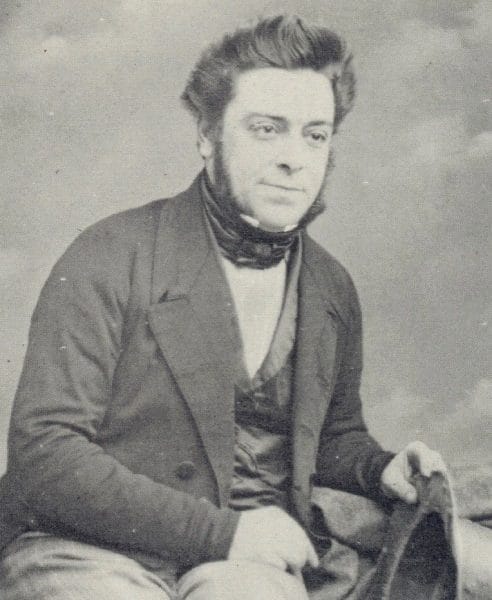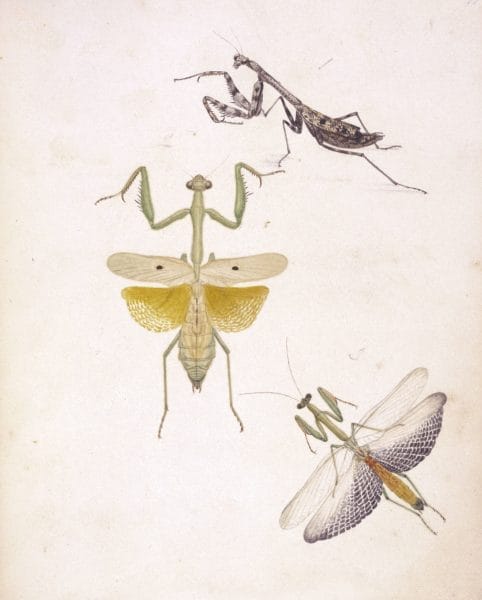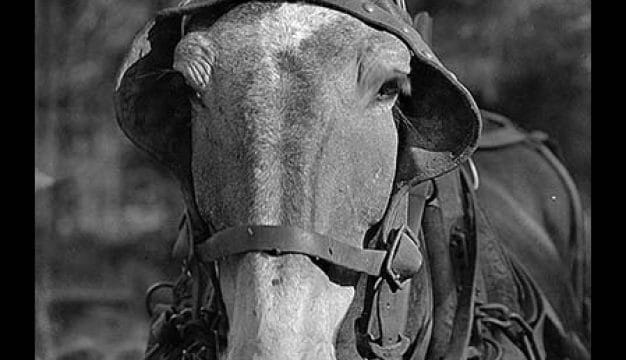Philip Henry Gosse
 Philip Henry Gosse
Philip Henry Gosse (1810-1888) was an English-born zoologist, naturalist, and scientific illustrator. He came to Alabama in 1838, where he taught the children of plantation owners near present-day Pleasant Hill, in the cotton-growing region of Dallas County. Although he lived in Alabama for only eight months, he captured, through his writings, sketches, and paintings, a vivid picture of the natural history and early plantation life in the Black Belt region just 20 years after Alabama became a state. Gosse’s most significant contribution to Alabama history and culture is his book, Letters from Alabama (1859), in which he describes his experiences. He also left an unpublished sketchbook of watercolor paintings of Alabama insects and wildflowers, titled Entomologia Alabamensis, now in the British Library in London.
Philip Henry Gosse
Philip Henry Gosse (1810-1888) was an English-born zoologist, naturalist, and scientific illustrator. He came to Alabama in 1838, where he taught the children of plantation owners near present-day Pleasant Hill, in the cotton-growing region of Dallas County. Although he lived in Alabama for only eight months, he captured, through his writings, sketches, and paintings, a vivid picture of the natural history and early plantation life in the Black Belt region just 20 years after Alabama became a state. Gosse’s most significant contribution to Alabama history and culture is his book, Letters from Alabama (1859), in which he describes his experiences. He also left an unpublished sketchbook of watercolor paintings of Alabama insects and wildflowers, titled Entomologia Alabamensis, now in the British Library in London.
Gosse was born at Worcester, England, on April 6, 1810, the second of four children of Thomas Gosse (1765-1844) and Hannah Best (1780-1860). The family moved to Poole, Dorset, on the southern coast of England when Philip Henry was six months old. His father earned a meager living as a painter of miniature portraits, and it was from him that Philip Henry and his older brother William learned the art of miniature painting at an early age. During his boyhood in Poole, Philip Henry became fascinated with the diversity of the marine life in the tidal pools bordering the harbor. He also developed an interest in insects. By the time he came to Alabama many years later, insects had captivated his attention more than any other type of animal. It was the combination of his love of nature, especially invertebrates, and his artistic talent, that led to Gosse become one of the best known zoologists in Europe in the nineteenth century.
 Alabama Butterflies
Gosse’s formal education as a child was limited to five years of day-school at Poole followed by two years of grammar school at nearby Blandford. Because his parents could not afford additional education, he left school at the age of 15 and took a job as a junior clerk at the counting house of Garland & Sons at Poole, a firm involved in the fish and seal trade between England and Canada. Two years later, he was transferred to the company’s shipping port at Carbonear, Newfoundland, where he continued to work as a clerk for the next seven years. During this time, he began collecting and painting insects in miniature, while at the same time carefully recording his observations in a journal. In 1835, he left Newfoundland and travelled to Lower Canada, now known as Quebec, where he purchased a farm in Compton Township, located about 20 miles north of the Vermont border. Discouraged by his lack of success, however, he sold the farm three years later and headed south, via Philadelphia, to Alabama. His intent was to collect fossil shells at Claiborne in Monroe County on the Alabama River, to send back to the Academy of Natural Sciences at Philadelphia.
Alabama Butterflies
Gosse’s formal education as a child was limited to five years of day-school at Poole followed by two years of grammar school at nearby Blandford. Because his parents could not afford additional education, he left school at the age of 15 and took a job as a junior clerk at the counting house of Garland & Sons at Poole, a firm involved in the fish and seal trade between England and Canada. Two years later, he was transferred to the company’s shipping port at Carbonear, Newfoundland, where he continued to work as a clerk for the next seven years. During this time, he began collecting and painting insects in miniature, while at the same time carefully recording his observations in a journal. In 1835, he left Newfoundland and travelled to Lower Canada, now known as Quebec, where he purchased a farm in Compton Township, located about 20 miles north of the Vermont border. Discouraged by his lack of success, however, he sold the farm three years later and headed south, via Philadelphia, to Alabama. His intent was to collect fossil shells at Claiborne in Monroe County on the Alabama River, to send back to the Academy of Natural Sciences at Philadelphia.
In May 1838, Gosse arrived by schooner at the Port of Mobile. While onboard the steamboat Farmer, making his way up the Alabama River to Claiborne, he met Judge Reuben Saffold, former chief justice of the Alabama Supreme Court. Saffold owned a plantation farther upriver near King’s Landing, at Pleasant Hill in Dallas County. Saffold offered Gosse a one-year contract to teach at a log schoolhouse that he and neighboring planters were in the process of building. Gosse accepted the position and taught there until the end of December. However, disillusioned by frontier violence, the treatment of enslaved workers, and at times in fear for his own safety, he left Alabama after only eight months to return to England, departing from Mobile on December 31, 1838.
 Carolina Mantis
During his stay at Pleasant Hill, Gosse carefully recorded his observations of animal and plant life, the surrounding forests and woodlands, plantation life, and common events in the everyday lives of the people that he encountered. He published his experiences as a series of articles, or letters, in the English magazine The Home Friend in 1855, and later in book form as Letters from Alabama in 1859. They were illustrated with engravings made from sketches and watercolors that he produced while in Dallas County. He continued through the rest of his life to reveal the splendor of nature through his writing and art.
Carolina Mantis
During his stay at Pleasant Hill, Gosse carefully recorded his observations of animal and plant life, the surrounding forests and woodlands, plantation life, and common events in the everyday lives of the people that he encountered. He published his experiences as a series of articles, or letters, in the English magazine The Home Friend in 1855, and later in book form as Letters from Alabama in 1859. They were illustrated with engravings made from sketches and watercolors that he produced while in Dallas County. He continued through the rest of his life to reveal the splendor of nature through his writing and art.
In 1848, Gosse married Emily Bowes, with whom he had his only child, Edmund William Gosse. Edmund became a well-known biographer and literary critic in England. He is perhaps best known for his book Father and Son (1907) about his relationship with his father. Following the death of Emily in 1857, Philip Gosse married Eliza Brightwen in 1860. The family lived at St. Marychurch, South Devonshire, where Gosse devoted much of his time to writing about natural history and religious topics. The latter reflects his fundamentalist, evangelical Christian theology.
 Philip H. and Edmund W. Gosse
He wrote more than 40 books and 270 scientific and religious articles, including An Introduction to Zoology (1844) and a series on Natural History, with separate volumes on mollusks, fishes, reptiles, birds, and mammals, and A Handbook to the Marine Aquarium (1855). In 1857, he published his most controversial book, Omphalos, in which he challenged the validity of evolution and presented his case for what today is called creationism. His most significant scientific works, however, were in marine biology and taxonomy, notably Actinologia Britannica: A History of the British Sea-Anemones and Corals (1858-1860) and The Rotifera (with C. T. Hudson) on marine rotifers (1886, 1889).
Philip H. and Edmund W. Gosse
He wrote more than 40 books and 270 scientific and religious articles, including An Introduction to Zoology (1844) and a series on Natural History, with separate volumes on mollusks, fishes, reptiles, birds, and mammals, and A Handbook to the Marine Aquarium (1855). In 1857, he published his most controversial book, Omphalos, in which he challenged the validity of evolution and presented his case for what today is called creationism. His most significant scientific works, however, were in marine biology and taxonomy, notably Actinologia Britannica: A History of the British Sea-Anemones and Corals (1858-1860) and The Rotifera (with C. T. Hudson) on marine rotifers (1886, 1889).
In recognition of his scientific contributions, Gosse was elected an Associate of the Linnaean Society (1850) and a Fellow of the Royal Society, London (1856). His greatest legacy, however, was as a popular writer of science for the general public. He is credited with producing the first illustrated field guide (on marine organisms) to help the non-specialist identify and learn about animals. In addition, Gosse invented the first salt-water aquarium in which to observe and study marine organism and designed the first public aquarium, which opened in London in 1858. Gosse died at St. Marychurch, Devon, on August 23, 1888, at the age of 78 and was buried at nearby Torquay cemetery.
Further Reading
- Freeman, R. B., and Douglas Wertheimer. Philip Henry Gosse: A Bibliography. Folkestone, U.K.: Dawson, 1980.
- Gosse, Edmund W. Father and Son: A Study of Two Temperaments. 1910. Reprint, New York: Scribner’s, 1949.
- Gosse, Philip Henry. Letters from Alabama: Chiefly Relating to Natural History. Edited by Gary R. Mullen and Taylor D. Littleton. 1859. Reprint, Tuscaloosa: University of Alabama Press, 2013.
- Jackson, Harvey H., III. “Philip Henry Gosse: An Englishman in the Black Belt.” Alabama Heritage 28 (Spring 1993): 37-45.
- Mullen, Gary R., and Taylor D. Littleton. Science and Art in Letters from Alabama and Entomologia Alabamensis. Tuscaloosa: University of Alabama Press, 2010.
- Thwaite, Ann. Glimpses of the Wonderful: The Life of Philip Henry Gosse. London: Faber & Faber, 2002.



